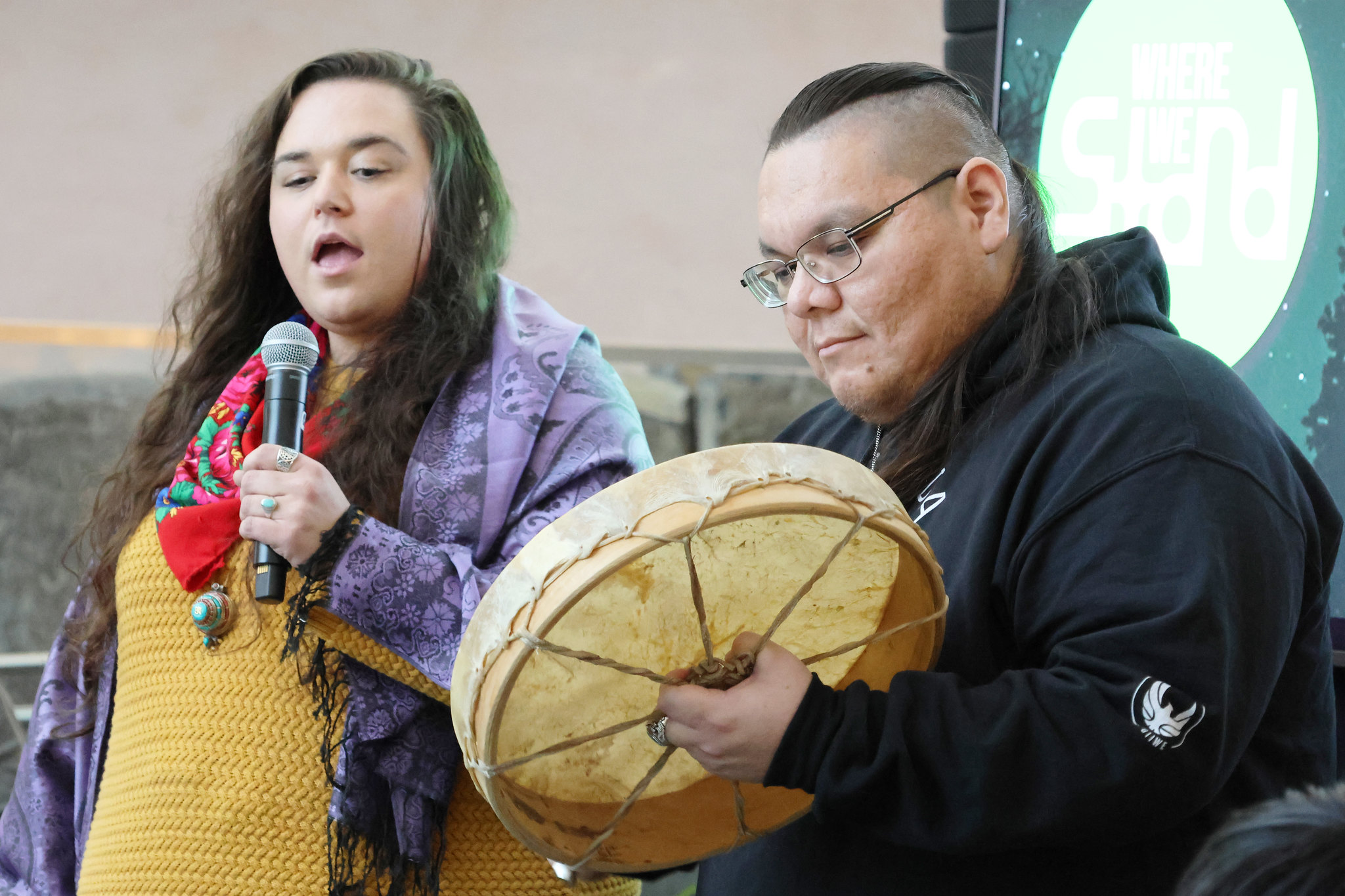WhereWeStand West: Bridging cultures through the arts
Edmonton and Winnipeg premieres continue sparking conversations on identity, belonging and reconciliation

The WhereWeStand project, led by the Canada Excellence Research Chair in Migration and Integration (CERC Migration) at Toronto Metropolitan University with support from the Bridging Divides resesach program, continues to foster connection and understanding through art. Following successful premieres in Nova Scotia and Ontario, its latest chapter unfolded in Western Canada with two events: one on November 14, 2024, at the Westbury Theatre in Edmonton, Alberta and another on November 17 at the Canadian Museum for Human Rights in Winnipeg, Manitoba.
Co-led by Gemini Award-winning filmmaker and scholar Cyrus Sundar Singh, alongside Anishinaabe Kwe filmmaker Nicole Lee, WhereWeStand West featured collaborative multimedia works created by Indigenous and non-Indigenous newcomer participants across Canada. These pieces explored themes of land, culture, and belonging, addressing topics such as displacement, the relationship to land, the experience of truth and reconciliation, resilience through grief, and the struggles faced by minority groups in Canada. The works were expressed through music, dance, spoken word, film, and visual art.

Izzeddin Hawamda and Aaron McKay presented their project We Are Here, But We Are Also There.

Cohort partners Yanfei Lu and William Monague discussed the process of making their film Unveiling, Embracing, Creating.
In Edmonton, the event opened the 27th Biannual Canadian Ethnic Studies Association (CESA) Conference, providing a space for both academic and artistic discourse. CESA President Yasmeen Abu-Laban expressed excitement about the premiere, calling it a timely reflection on the relationship between Indigenous peoples, the land and newcomers.
The Winnipeg event, hosted at the Canadian Museum for Human Rights (CMHR), set the stage for discussions on justice, reconciliation, and the power of art in healing. Sarah Schwendemann, CMHR's Director of Partnerships and Visitor Growth, emphasized the role of decolonial practices in amplifying voices that reimagine collective understanding: “On Turtle Island, where many histories coexist, projects like WhereWeStand bridge the divide between our past and the shared vision we are creating for our future.”
For two of the performers, the Winnipeg event held personal significance, allowing them to bring their stories closer to their communities. Izzeddin Hawamda, a Palestinian living in Winnipeg, and Aaron McKay, Anishinaabe from Rolling River and Swan Lake First Nations in Minnedosa, Manitoba, presented We Are Here, But We Are Also There. Their performance, which combined poetry, photography, and a healing song passed down from Aaron’s late grandfather, highlighted how their shared experience of searching for “home” connected them across cultures. Their collaboration exemplified how art can bridge personal histories and create powerful, cross-cultural understanding.
After each performance and film screening, the cohort had the opportunity to engage with the audience and discuss their creative works, sharing the reflections and journeys that shaped their experiences. This exchange invited the public—a full room of registrants and museum visitors—into the creative process, offering a deeper understanding of the project and the connections it sparked.
Cyrus Sundar Singh notes, “Art has a unique ability to distract us, offering us the opportunity to feel, heal and transform.” He explains that the WhereWeStand project is not just about creativity, but also about challenging divisive narratives. Through storytelling and dialogue, the project encourages understanding between communities that rarely engage with one another.
Local artists, community members and scholars shared their perspectives and talents with the audience, helping to make each event a unique experience. Distinguished guests included Sissy Thiessen Kootenayoo, Treaty 6 Nakota Sioux, Cree and German cultural educator, performer and artist; Matthew Wildcat, Assistant Professor of Political Science and Native Studies at the University of Alberta; Philip Geller, Ashkenazi-Jew and Red River Michif performer and artist; Brandi Vezina, Red River Métis singer-songwriter; and Jesse Bandura, Métis singer-songwriter.
“In WhereWeStand, every piece of art is a bridge between cultures,” said Anna Triandafyllidou, Canada First Excellence Chair in Migration and Integration and Bridging Divides Scientific Director, who supported the project from its inception. “We’re grateful to bring this project to communities across the country. Each time I see these performances and films, I discover new layers of understanding. The project is just the beginning—the relationships among participants and their communities continue to evolve into new ideas, collaborations and lasting connections.”







